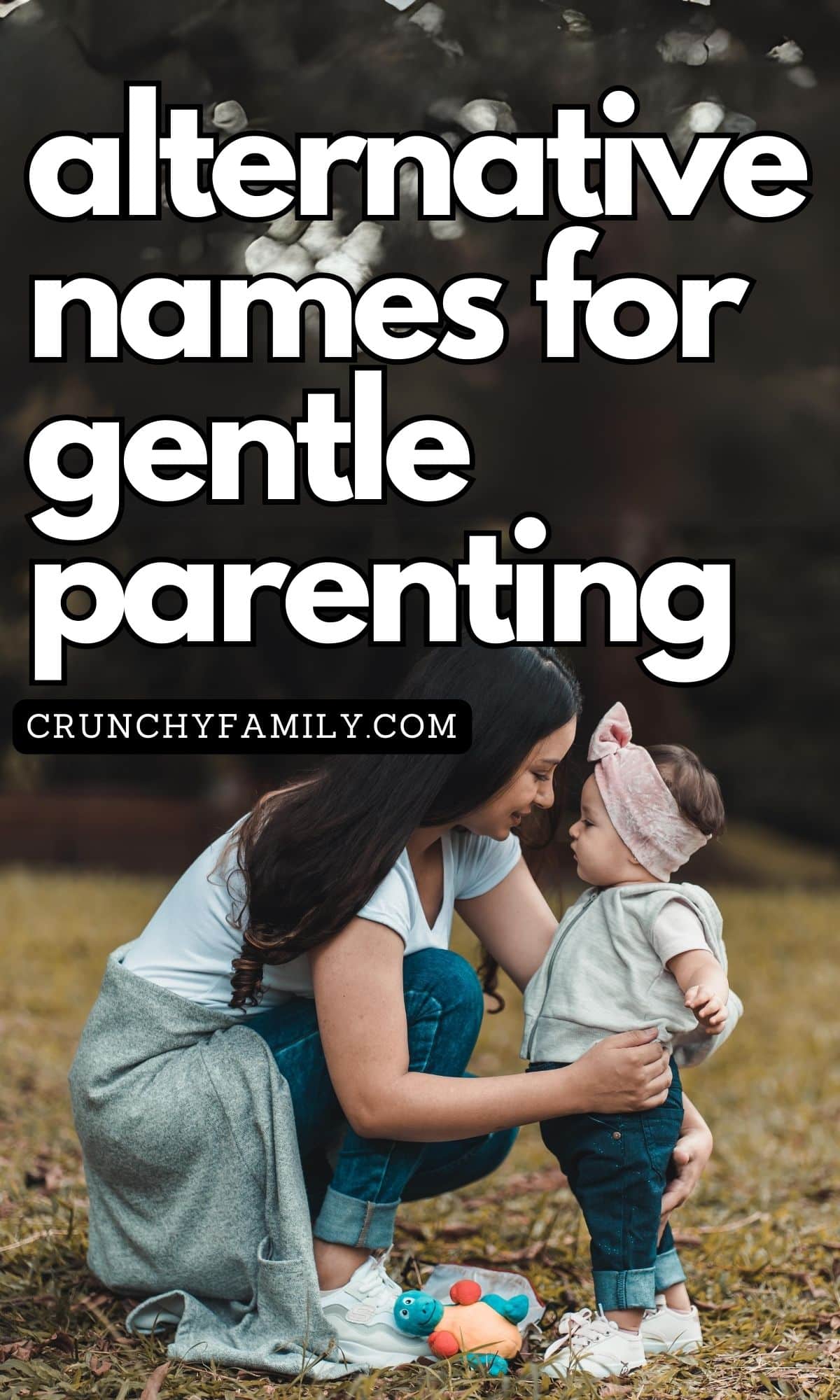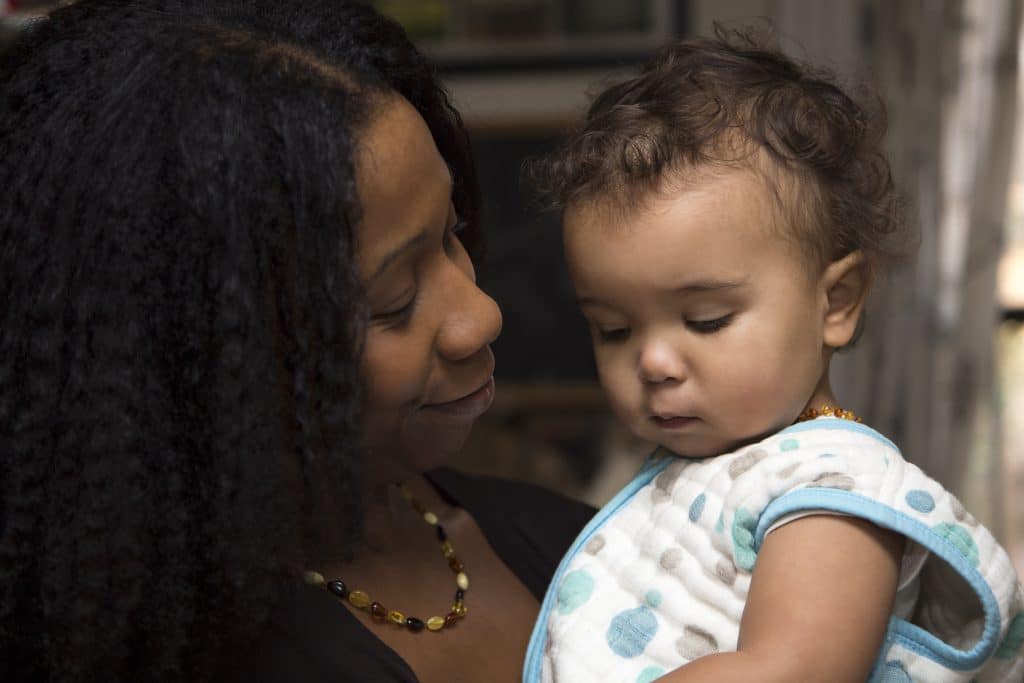Gentle parenting is a parenting style based on connection, empathy, understanding, and respectful communication, and it is becoming increasingly popular among modern parents.
Though “gentle parenting” is a term many are familiar with, various other names also describe this nurturing approach.
On social media it’s easy to get overwhelmed by the different styles and different types of parenting showcased online, and all of the terminologies. But sometimes, even when using different names for the parenting styles, really we may be on the same page and talking about a very similar thing.

So let’s list some of these other names for gentle parenting, defining why gentle parenting can be sometimes referred to as these.
Positive Parenting
Positive parenting is all about building a child’s self-esteem and confidence through praise, encouragement, and nurturing. Instead of focusing on punishment, this approach teaches children the behaviors that parents want to see, fostering a positive environment where children feel valued and understood.
It’s a proactive strategy that focuses on rewarding good behavior to encourage its recurrence, aiming to instill a sense of security and worth in children.
So yes, gentle parenting is also positive parenting.
Related: 6 Gentle Parenting Alternatives to Time Out
Peaceful Parenting
The goal of peaceful parenting is to foster a calm and nurturing home environment where every family member feels respected and loved.
This method uses empathetic communication and effective conflict resolution strategies to deal with challenges, emphasizing understanding and cooperation over conflict.
By prioritizing peace at home, children learn to handle disagreements and difficulties in a constructive manner, mirroring these behaviors in their external interactions.
Gentle parenting is also peaceful parenting.

Nonviolent Parenting
A subset of peaceful parenting, nonviolent parenting firmly rejects physical punishment and emotional manipulation.
It’s built on the foundation of respect and understanding, seeking cooperative solutions to challenges that arise. This approach encourages parents to model the behavior they wish to see, ensuring that children grow up in an environment where they feel safe and valued, free from fear of aggression.
Using physical discipline does not fit in with the gentle parenting style, so by nature gentle parenting is a non violent parenting style.
Related: Does Gentle Discipline Work?
Conscious Parenting
Conscious parenting calls on parents to be fully present and engaged in their interactions with their children. It encourages mindfulness and reflection, urging parents to consider the long-term effects of their actions on their child’s development and the overall family dynamics.
This approach helps create a thoughtful, intentional parenting style that respects the child’s needs and the parent’s role in shaping their future.

Attachment Parenting
Attachment parenting emphasizes creating strong emotional bonds between parent and child. This method prioritizes responsiveness to a child’s needs, close physical contact, and, often, practices like extended breastfeeding and cosleeping, along with babywearing.
By fostering an intimate connection, attachment parenting aims to meet the emotional and physical needs of children, providing a secure base from which they can confidently explore the world.
Since so many of these attachment parenting practises are considered “crunchy” it’s also often referred to as a crunchy parenting style, and is a type of gentle parenting.

Natural Parenting
Natural parenting complements attachment parenting by focusing on following the child’s natural rhythms and timelines. This philosophy steers clear of unnecessary interventions, allowing children to develop at their own pace in a supportive environment.
It embraces a back-to-basics approach, often emphasizing organic choices in diet and lifestyle, and aligns closely with the principles of holistic health and wellness.

Respectful Parenting
At the heart of respectful parenting lies a deep-seated value for mutual respect between parent and child. This approach seeks to understand and honor a child’s point of view, accommodating their preferences and feelings whenever practical.
It’s about treating children as worthy individuals whose opinions matter, thus nurturing their sense of autonomy and self-respect.
Related: Effective Emotional Regulation Games for Young Kids
Authoritative Parenting
Authoritative parenting is often confused with authoritarian parenting, but the two are markedly different. Authoritative parenting, like gentle parenting, is based on high levels of warmth and communication but also combines these with clear guidelines and expectations.
It is not about being overly strict or controlling, as seen in authoritarian styles, nor is it about unstructured freedom that characterizes permissive parenting. Instead, authoritative parenting strikes a balance, offering guidance while respecting the child’s independence and input.
This method reinforces positive behavior through supportive and reciprocal interactions and is effective in fostering responsibility, respect, and social competence in children. By maintaining firmness and love, authoritative parents provide a stable, supportive environment that promotes healthy development.

In gentle parenting, firm boundaries are held with kindness and understanding, and children are allowed to suffer the natural consequences of their behaviour rather than using draconian punishments – this does not mean kids are allowed to do whatever they want without any discipline or boundaries.
Related: 10 Powerful Reasons Why Kids Need Role Models
While the terminology may vary, the core of gentle parenting philosophies remains steadfastly child-centered and compassionate. Each name for the gentle parenting styles offers a slightly different perspective, but all share the goal of fostering a nurturing, understanding, and respectful relationship between parent and child.
The foundational principles of empathy, respect, and understanding are universally embraced. This exploration allows us to appreciate the richness of child-centered parenting approaches that exist under different labels. By recognizing these shared values, parents can confidently adopt and adapt aspects of these philosophies to best support their child’s development, fostering a nurturing environment that is both responsive and thoughtful.
Understanding these nuances can help parents feel connected whatever term you choose to use, and go on creating a supportive environment that nurtures happy, healthy children.
3 thoughts on “8 Alternative Names for Gentle Parenting”